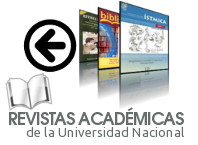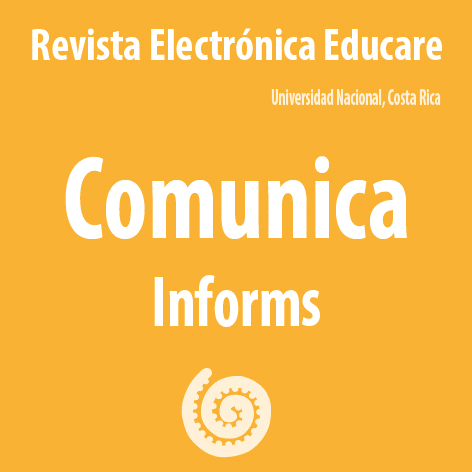What Do High School Students Learn About Physical Education?
DOI:
https://doi.org/10.15359/ree.23-3.2Keywords:
Educación Física, Pensamiento del Alumnado, Aprendizaje, Estudio de Caso.Abstract
In the teaching and learning process, there are interactions between teachers, students, materials, experiences, and means; this forms a significant whole in which learning takes place. The students’ thinking about what they learn in class and the importance they give to that learning are factors that affect the attitude towards the Physical Education subject. The objective of this research was to study students’ beliefs and perceptions regarding learning in physical education classes. The research is a case study involving 93 students of 11th grade, from an educational institution in the city of Medellín, Colombia. The information was collected through observation, a questionnaire, and focus groups. SPSS software was used for the information analysis of the questionnaire, and the Nvivo program, for focus groups and observation. The students consider that the main lessons they draw from the subject are the application of motor skills, the knowledge of the functioning of the body, and the learning of knowledge and application of sport’s rules. Most students believe that Physical Education subject should serve to improve health and fitness condition and learn values. These results should guide physical education with involvement in the cognitive field, as well as a value maker and improvement of human motor skills.
References
Abellán, J. y Sáez-Gallego, N. (2017). Los para-deportes como contenido de educación física en primaria: El ejemplo de la boccia. Didacticae, 2, 134-142. doi: https://doi.org/10.1344/did.2017.2.134-142
Ardoy, D. N., Fernández-Rodríguez, J. M., Jiménez-Pavón, D., Castillo, R., Ruiz, J. R. y Ortega, F. B. (2014). A physical education trial improves adolescents’ cognitive performance and academic achievement: the EDUFIT study. Scandinavian Journal of Medicine & Science in Sports, 24(1), e52-e61. doi: https://doi.org/10.1111/sms.12093
Aubert, A., Bizkarra, M. y Calvo, J. (2014). Actuaciones educativas de éxito desde la educación física. Retos. Nuevas Tendencias en Educación Física, Deporte y Recreación, 25, 144-148. Recuperado de https://dialnet.unirioja.es/servlet/articulo?codigo=4555200
Barbero, J. I. (2007). Capital(es) corporal(es) que configuran las corrientes y/o contenidos de la educación física escolar. Ágora para la Educación Física y el Deporte, 4-5, 21-38. Recuperado de https://dialnet.unirioja.es/servlet/articulo?codigo=2524857
Beltrán-Carrillo, V. J., Devís-Devís, J., Peiró-Velert, C. y Brown, D. H. K. (2012). When physical activity participation promotes inactivity: Negative experiences of Spanish adolescents in physical education and sport. Youth & Society, 44(1), 3-27. doi: https://doi.org/10.1177/0044118X10388262
Bixio, C. (2001). Enseñar a aprender. Construir un espacio colectivo de enseñanza-aprendizaje. Rosario: Homo Sapiens.
Blair, J. y Brick, P. D. (2010). Methods for the analysis of cognitive interviews. En Proceedings of the section on survey research methods (pp. 3739-3748). Washington: American Statistical Association. Recuperado de https://ww2.amstat.org/sections/srms/Proceedings/y2010/Files/307865_59514.pdf
Carlson, T. B. y Hastie, P. A. (1997). The student social system within sport education. Journal of Teaching Physical Education, 16(2), 176-195. doi: https://doi.org/10.1123/jtpe.16.2.176
Carreiro da Costa, F. (2010). Educação física: Disciplina dispensável versus disciplina imprescindível como ultrapassar a situação paradoxal que caracteriza a educação física? Revista Brasileira de Docência, Ensino e Pesquisa em Educação Física, 2(1), 91-110.
Castejón Oliva, F. J. (2015). La investigación en iniciación deportiva válida para el profesorado de educación física en ejercicio. Retos. Nuevas Tendencias en Educación Física, Deporte y recreación, 28, 263-269. Recuperado de https://recyt.fecyt.es/index.php/retos/article/view/35535/19673
Chaverra, B. E., Gaviria, D. F. y González, E. V. (2019). El estudio de caso como alternativa metodológica en la investigación en educación física, deporte y actividad física. Conceptualización y aplicación. Retos, 35, 422-427. Recuperado de https://recyt.fecyt.es/index.php/retos/article/view/60168/41750
Chen, S. L., Sun, H. C., Zhu, X. H. y Chen, A. (2014). Relationship between motivation and learning in physical education and after-school physical activity. Research Quarterly for Exercise and Sport, 85(4), 468-477. doi: https://doi.org/10.1080/02701367.2014.961054
Coll, C. (2004). Constructivismo y educación: La concepción constructivista de la enseñanza y el aprendizaje. En C. Coll, J. Palacios & A. Marchesi (Eds.), Desarrollo psicológico y educación. 2. Psicología de la educación escolar (Vol. 2, pp. 157-186). Madrid: Alianza.
Coll, C. (2010). Enseñar y aprender, construir y compartir: Procesos de aprendizaje y ayuda educativa. En C. Coll (Coord.), Desarrollo, aprendizaje y enseñanza en la educación secundaria (pp. 31-61). Barcelona: Graó.
Cubero, R. (2005). Perspectivas constructivistas. La intersección entre el significado, la interacción y el discurso. Barcelona: Graó.
Del Villar, F. (2009). La calidad del aprendizaje en educación física. Una propuesta para la educación secundaria. Tándem. Didáctica de la Educación Física, 29, 64-77.
Devís, J. y Pérez, V. (2001). La ética en la promoción de la actividad física relacionada con la salud. En J. Devís (Coord.), La educación física, el deporte y la salud en el siglo XXI (pp. 341-355). Alcoy: Marfil.
Dilsad Ahmed, M. D., Ho, W.K.Y., Zazed, K., Van Niekerk, R. L., y Jong-Yong, L. (2016). The adolescent age transition and the impact of physical activity on perceptions of success, self-esteem and well-being. Journal of Physical Education and Sport, 16(3), 776-784. doi: https://doi.org/10.7752/jpes.2016.03124
Ennis, C. D. (2011). Physical education curriculum priorities: Evidence for education and skilfulness. Quest, 63(1), 5-18. doi: https://doi.org/10.1080/00336297.2011.10483659
Esteban-Cornejo, I., Tejero-González, C. M., Sallis, J. F. y Veiga, O. L. (2015). Physical activity and cognition in adolescents: A systematic review. Journal of Science and Medicine in Sport, 18(5), 534-539. doi: https://doi.org/10.1016/j.jsams.2014.07.007
Fagrell, B., Larsson, H. y Redelius, K. (2012). The game within the game: Girls’ underperforming position in physical education. Gender and Education, 24(1), 101-118. doi: https://doi.org/10.1080/09540253.2011.582032
Fernández, M., González, M., Toja, B. y Carreiro, F. (2017). Valoración de la escuela y la educación Física y su relación con la práctica de actividad física de los escolares. Retos. Nuevas Tendencias en Educación Física, Deporte y Recreación, 31, 312-315. Recupersdo de https://recyt.fecyt.es/index.php/retos/article/view/53508/32237
Figueiredo, Z. (2010). Experiências profissionais, identidades e formação docente em educação física. Revista Portuguesa de Educação, 23(2), 153-171. Recuperado de http://www.scielo.mec.pt/pdf/rpe/v23n2/v23n2a07.pdf
García, R. y Parra, J. M. (2010). Didáctica e innovación curricular. Madrid: Catarata.
Gaviria, D. F. y Arboleda, V. H. (2009). La práctica deportiva escenario para la convivencia y la salud. En B. E. Chaverra (Ed.), Juego y deporte: Reflexiones conceptuales hacia la inclusión (pp. 63-76). Medellín: Funámbulos Editores. Recuperado de http://viref.udea.edu.co/contenido/publicaciones/expo2009/juego_deporte-2009.pdf
Gaviria, D. F. y Castejón, F. J. (2016a). Desarrollo de valores y actitudes a través de la clase de educación física. Movimento, 22(1), 251-262.
Gaviria, D. F. y Castejón, F. J. (2016b). La educación física en la voz de los estudiantes de secundaria. Un estudio de caso. Cultura, Ciencia y Deporte, 11(32), 107-118. doi: https://doi.org/10.12800/ccd.v11i32.711
Gonçalves, C. (1998). Relações entre características e crenças dos alunos e os seus comportamentos nas aulas de educação física (Tesis doctoral). Universidade Técnica de Lisboa, Lisboa.
Graham, G. (1995). Physical education through students’ eyes and students’ voices: Introduction. Journal of Teaching in Physical Education, 14(4), 364-371. doi: https://doi.org/10.1123/jtpe.14.4.364
Hernández, R., Fernández, C. y Baptista, M. (2014). Metodología de la investigación. México: MacGraw-Hill.
Kirk, D. y Oliver, K. L. (2014). La misma historia de siempre: Reproducción y reciclaje del discurso dominante en la investigación sobre la educación física de las chicas. Apunts. Educación Física y Deportes, 2(116), 7-22. doi: https://doi.org/10.5672/apunts.2014-0983.es.(2014/2).116.01
Lamour, H. (1991). Manual para la enseñanza de la educación física y deportiva. Madrid: Paidós.
López-Ros, V. (2013). La organización de la actividad conjunta en la enseñanza escolar de los deportes colectivos. En F. J. Castejón, F. J. G., Fuentes-Guerra, F. Jiménez y V. López (Eds.), Investigaciones en formación deportiva (pp. 41-64). Sevilla: Wanceulen.
López-Ros, V., Castejón-Oliva, F. J., Bouthier, D. y Llobet-Martí, B. (2015). Modelos para una enseñanza comprensiva del deporte. Espacios comunes para el encuentro (y algún desencuentro). Ágora para la EF y el deporte, 17(1), 45-60. Recuperado de https://dialnet.unirioja.es/servlet/articulo?codigo=5072354
López, V., M., Pérez, D., Manrique, J. C. y Monjas, R. (2016). Los retos de la educación física en el siglo XXI. Retos. Nuevas Tendencias en Educación Física, Deporte y Recreación, 29,182-187. Recuperado de https://recyt.fecyt.es/index.php/retos/article/view/42552/25499
Maldonado, A., Castejón, F. J, López, C., Hernández, J. L., Velázquez, R., Martínez, M. E., … Moya, J. M. (2007). ¿Qué opinan y qué esperan los alumnos y alumnas de la educación física? Tándem: Didáctica de la Educación Física, 23, 68-85.
Muros, B. (2006). La puesta en práctica de la pedagogía crítica: Estrategias metodológicas críticas. Tándem: Didáctica de la Educación Física, 20, 33-44.
Proios, M., Proios M. C., Siatras, T. y Patmanoglou, S. (2015). Students’ perceived behaviors at school: A relation between behaviors in physical education lessons and the classroom. Journal Human Sport & Exercise, 10(1), 113-125. doi: https://doi.org/10.14198/jhse.2015.101.10
Sáenz-López, P. (1999). La importancia de la educación física en primaria. Apunts: Educación física y deportes, 57, 20-31. Recuperado de http://www.revista-apunts.com/es/hemeroteca?article=595
Sánchez, J. F. (2009). Análisis del clima del aula en educación física. Un estudio de casos (Tesis doctoral). Universidad de Málaga, Málaga. Recuperado de http://www.biblioteca.uma.es/bbldoc/tesisuma/17677907.pdf
Sevil, J., Abós, Á., Generelo, E., Aibar, A. y García-González, L (2016). Importancia del apoyo a las necesidades psicológicas básicas en la predisposición hacia diferentes contenidos en educación física. Retos. Nuevas Tendencias en Educación Física, Deporte y Recreación, 29, 3-8. Recuperado de https://recyt.fecyt.es/index.php/retos/article/view/34855/21751
Siedentop, D. (2002). Ecological perspectives in teaching research. Journal of Teaching in Physical Education, 21(4), 427-440. doi: https://doi.org/10.1123/jtpe.21.4.427
Stake, R. E. (2013). Estudios de casos cualitativos. En N. K. Denzin y Y. Lincoln (Coords.), Manual de investigación cualitativa Vol. 3: Las estrategias de investigación cualitativa (pp. 154-197). Barcelona: Gedisa.
Stroot, S. (1994). Contemporary crisis or emerging reform? A review of secondary school physical Education. Journal of Teaching in Physical Education, 13(4), 333-341. doi: https://doi.org/10.1123/jtpe.13.4.333
Tannehill, D., Romar, J.-E., O´Sullivan, M., England, K. y Rosenberg, D. (1994). Attitudes toward physical education: Their impact in mow physical education teacher make sense of their work. Journal of Teaching in Physical Education, 13(4), 406-420. doi: https://doi.org/10.1123/jtpe.13.4.406
Taylor, S. J. y Bogdan, R. (1992). Introducción a los métodos cualitativos de investigación. Barcelona: Paidós.
Velázquez, C. (2015). Aprendizaje cooperativo en educación física: Estado de la cuestión y propuesta de intervención. Retos. Nuevas Tendencias en Educación Física, Deporte y Recreación, 28, 234-239. Recuprado de https://dialnet.unirioja.es/servlet/articulo?codigo=5147772
Downloads
Published
How to Cite
Issue
Section
License
1. In case the submitted paper is accepted for publication, the author(s) FREELY, COSTLESS, EXCLUSIVELY AND FOR AN INDEFINITE TERM transfer copyrights and patrimonial rights to Universidad Nacional (UNA, Costa Rica). For more details check the Originality Statement and Copyright Transfer Agreement
2. REUTILIZATION RIGHTS: UNA authorizes authors to use, for any purpose (among them selfarchiving or autoarchiving) and to publish in the Internet in any electronic site, the paper´'s final version, both approved and published (post print), as long as it is done with a non commercial purpose, does not generate derivates without previous consentment and recognizes both publisher's name and authorship.
3. The submission and possible publication of the paper in the Educare Electronic Journal is ruled by the Journal’s editorial policies, the institutional rules of Universidad Nacional and the laws of the Republic of Costa Rica. Additionally, any possible difference of opinion or future dispute shall be settled in accordance with the mechanisms of Alternative Dispute Resolution and the Costa Rican Jurisdiction.
4. In all cases, it is understood that the opinions issued are those of the authors and do not necessarily reflect the position and opinion of Educare, CIDE or Universidad Nacional, Costa Rica. It is also understood that, in the exercise of academic freedom, the authors have carried out a rogorous scientific-academic process of research, reflection and argumentation thar lays within the thematic scope of interest of the Journal.
5. The papers published by Educare Electronic Journal use a Creative Commons License:













 The articles published by Educare Electronic Journal can be shared with a Creative Commons License:
The articles published by Educare Electronic Journal can be shared with a Creative Commons License: 



